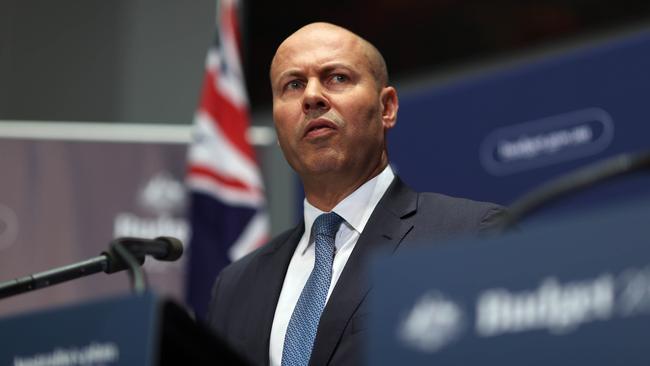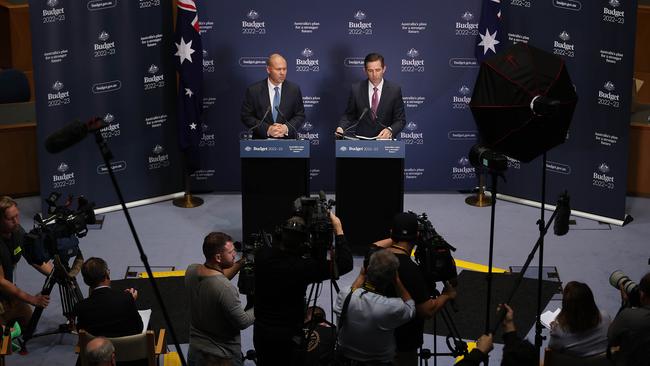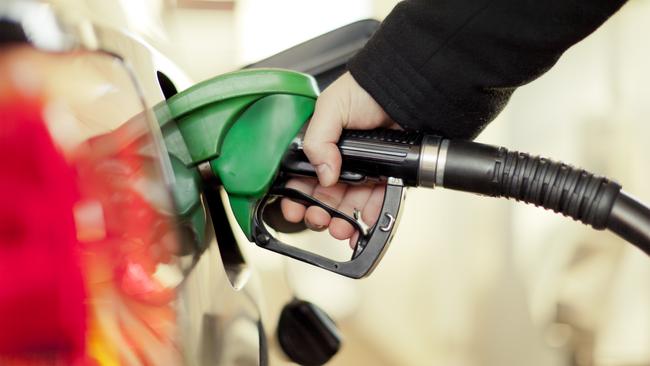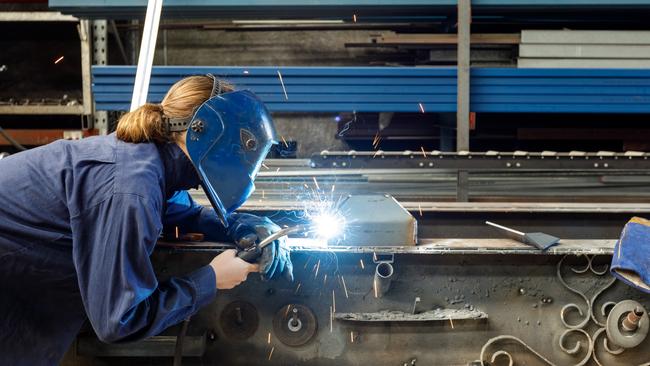
That’s the bigger picture of what’s going on right now as more cash in the form of cost of living relief is being pumped into an economy already hitting overdrive.
Even Treasurer Josh Frydenberg on Tuesday acknowledged conditions are as close to good as they get. He pointed to consumer sentiment being at its highest level in 11 years; business conditions are at record highs; new house starts are at the best in 20 years and significantly “more Australians are in work than ever before”.
In a perfect world now is the time for governments to get out of the way following the hundreds of billions of dollars in support thrown at the economy to fortify it during the Covid years.
And now Canberra should be working with business to develop a plan and build resilience ahead of the next existential shock.
Take your pick on looming risks: escalation of the war in Ukraine, China slowdown; the prospect of Covid-22; a global energy shortage; natural disasters; or even the growing volume of cyber attacks.

Indeed, optimism in the budget papers is heavily tempered by Russia’s invasion of Ukraine. This is a major risk to global growth and is exacerbating existing global inflation pressures.
If the conflict has a larger-than-expected impact on global energy supply, such as an end of Russian gas in Europe, this would weigh more heavily on global growth and inflation, Treasury warned.
Ideally Canberra should be bringing its best to the table to meet the themes of the new industrial revolution underway: This ranges from capturing global spending on renewable energy; the shift to automation and the massive-tech skilling needed across the workforce.
Far-reaching reforms in energy security, supply chain resilience and tax simplification are absent.
But the best corporate minds know there’s no such thing as a perfect world and politics is Canberra’s core business with re-election the simple, single goal of this Morrison-Frydenberg budget.
This document is all about politics and business from super, mining and manufacturing can sit out because it doesn’t get a vote in the upcoming election.
After all the levels fiscal and monetary policy were pulling in the same direction during the two year Covid emergency, they are now starting to move in different directions.
New spending measures including cost of living relief are front loaded with most of it taking place over the coming 12 months.
The Reserve Bank, which has already turned off its bond-buying program, is widely tipped to start raising the cash rate from June, tightening the policy levers. Money markets are currently pricing in the cash rate will be sitting at a hawkish 2.5 per cent in a year’s time from its emergency level currently at 0.1 per cent.
The budget splash comes as business and household savings are now sitting at $182bn. Business is planning to spend at the highest level in more than a decade and a record $35bn in dividends are in the process of being sent out to households.
At the same time, business is doing the heavy lifting on the budget in the coming year with company tax receipts expected to be $10.3bn higher next financial year and $9.8bn higher over the next four years.
The sharp upgrade from just a few months in tax take ago is largely due to the short-term burst from the war in Ukraine pushing up commodity prices and delivering windfall resources profits. But this strength is expected to taper off in years in line with the assumed decline in iron ore and coal prices.
Treasury has undercooked its iron price forecast for the fourth year running as it assumes the price of the metal will more than halve over the coming year to $US55 a tonne. This offers one of the biggest hollow logs in the Budget papers.
It has taken a more bearish view on thermal coal forecasting it falls from $US320 to $US60 per tonne. Met coal, the mainstay of steel production, is forecast to fall from $US512 a tonne to $US130 a tonne. Oil is expected to remain elevated above $US100 a barrel.
Extremely tight labour markets remains the sleeper in the budget. As business knows they are already paying more for new staff. Wages growth is forecast to jump to the fastest pace in more than a decade rising to 3.25 per cent over each of the next two years, giving ammunition for Reserve Bank boss Philip Lowe to pull the trigger on the rate hike cycle.
This conveniently puts wages growth slightly ahead of inflation at which is forecast to rise at 3 per cent and 2.75 per cent over the same period.

The February profit reporting season has shown corporate Australia remains in strong health and excess case is being sent back to shareholders or used to pay down debt. The lessons haven’t rubbed off on Canberra yet with gross debt set to pass the $1 trillion mark sometime in the December quarter.
Gross debt is expected to peak at 44.9 per cent of GDP at 30 June 2025 – $1.17 trillion – before falling to 40.3 per cent of GDP by the end of the medium term.
Net debt – the number that really counts – will increase to $714.9bn or 31 per cent of GDP next year and peak at $864.7bn or 33.1 per cent of GDP in June 2026, the budget papers show.
On Tuesday night ratings agency S&P Global looked through the rising debt levels and reaffirmed Australia’s AAA rating. This means that Australia stays in an elite group of 11 countries with the rolled-gold rating.
The most recent NAB monthly business survey show business conditions are sharply improving as conditions and confidence regains momentum after stalling through summer’s Omicron virus outbreak.
Business is embarking on catch-up spending, powering ahead with investment as the economy recovers. New business investment is forecast to grow by 5.5 per cent this financial year and jumps to a sharp 9 per cent next year as mining investment picks up. Business investment is forecast to ease to 1 per cent in 2024.
While business investment is on the rise in the near term, a Business Council of Australia paper released this week pointed out that spending on gross fixed capital – that is the things the build out production and creates wealth and employment – has been steadily falling as a proportion of the economy. In the year before Covid hit, the proportion of business investment was the lowest in 60 years.
Miners will get little benefit from the $3bn cut in the fuel excise given most of their diesel use is off road. However Brad Banducci at Woolworths, Steven Cain at Coles and Lindsay Fox of Linfox and others that drive trucks across the nation will enjoy a partial windfall for the next six months with 4.3 cents a litre on petrol and diesel.
Plumbers and small businesses that don’t fall under the fuel tax credit net will get the full benefit of 22.2 cents a share. The fuel excise reduction will help temper inflation, reducing it by 0.25 percentage points over the six month life of the program. Whoever is in government faces a dilemma in six months when the fuel levy is scheduled to rise.
The first task of new Australian Competition and Consumer Commission boss Gina Cass-Gottlieb will be to monitor pricing among petrol retailers to ensure that the lower excise rate is fully passed on to Australians.
At the same time the more than $3 trillion superannuation got its wish and has been left alone, with no tax changes.

Labour-starved businesses have the immigration doors opened with the financial 2023 migration program set at 160,000 places. Skilled migration is targeted to make up 70 per cent of the permanent migration, with 10,000 additional places, which means it will be easier for businesses to hire skilled workers from offshore.
Frydenberg has extended the popular instant asset write-off scheme while announcing the extension of these measures for a further year until June 2023. This measure for businesses with annual turnover less than $5bn helps spur investments including allowing tradies buy a new ute, a farmer a new harvester or machinery for manufacturers.
He has also set aside $1bn to support their digital adoption for small business move to digital adoption such as portable payment devices, cyber security systems or subscriptions to cloud-based services. This will amount to a 20 per cent deduction on up to $100,000 a year on tech spending.
The patent box aimed at spurring R&D spending, allows income earned from new patents that have been developed in Australia will be taxed at a concessional 17 per cent rate — almost half the rate that applies to big business. The patent box already applies to the medical and biotech sectors Canberra will now look at expanding the program the renewable energy sector which is where the wave of global cash is being directed.
A tax crackdown on multinationals, tech companies and multi-millionaires is estimated to increase total tax receipts by $2.1bn over the next four years.
For the agencies that matter to business, spending is stable or has come off slightly. Cash going to corporate watchdog ASIC falls from $462m this financial year is to $448m next financial year. Funding for Australian Prudential Regulation Authority holds steady at $228m. The tax office loses almost $300m as its major tech investment spending program tails off.




Pouring extra fuel on a fire already burning bright is just a waste of fuel.